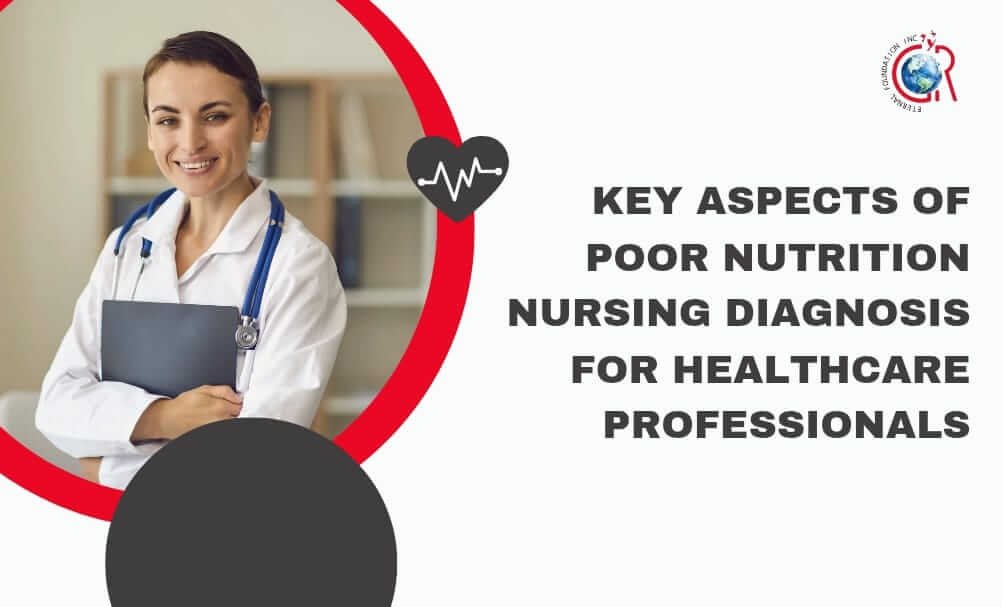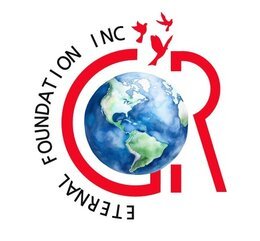
Nutrition is very important for everyone’s health. As a healthcare professional, it’s crucial to know how to spot and fix problems related to poor nutrition. We discuss how healthcare professionals can identify those who are not getting the right nutrients and what steps they can take to improve their patients’ dietary habits. This process is essential for helping patients lead healthier lives.
Addressing a poor nutrition nursing diagnosis effectively can greatly improve a person’s health and wellbeing. In this blog, we dive into what it means to make a poor nutrition nursing diagnosis. This involves understanding the signs of poor nutrition, figuring out the causes, and deciding the best ways to help patients get better.
Understanding Poor Nutrition Nursing Diagnosis
Poor nutrition means not eating the right kinds of food that the body needs to stay healthy. It can happen in different ways. Sometimes, people don’t get enough nutrients, which is called undernutrition. Other times, they might eat too much of certain things, leading to overnutrition, which can cause obesity. There’s also a problem called micronutrient deficiency, which happens when someone doesn’t get enough specific vitamins and minerals.
Each of these situations can lead to serious health issues. A poor nutrition nursing diagnosis involves healthcare professionals identifying these nutritional problems so they can help patients improve their diets. This diagnosis is crucial because getting the right nutrition is essential for good health and preventing diseases.
Identifying Poor Nutrition
The first step in tackling nutritional problems is to make a correct diagnosis. This process, known as a poor nutrition nursing diagnosis, involves identifying the specific nutritional issues a patient is facing. By accurately diagnosing these problems, healthcare professionals can develop an effective plan to address them.
This is crucial because the right diagnosis leads to the right treatment, helping patients improve their health by getting the proper nutrients they need. Here are common signs and indicators that healthcare professionals use to identify poor nutrition:
Physical Signs:
Physical signs play a crucial role in a poor nutrition nursing diagnosis. If a patient shows noticeable weight loss or gain, has poor skin elasticity, thinning hair, or experiences swollen or bleeding gums, these can all be indicators of nutritional problems.
Recognizing these signs helps healthcare professionals identify and diagnose nutritional issues accurately, enabling them to provide the necessary interventions to improve the patient’s overall health.
Dietary Assessment:
A dietary assessment is key in making a poor nutrition nursing diagnosis. By asking patients about their eating habits, healthcare professionals can identify if they are not getting enough essential nutrients. This step is crucial because understanding what patients eat helps pinpoint nutritional gaps.
Addressing these gaps allows for better management of their overall health, ensuring they receive a balanced diet that meets their body’s needs.
Medical History:
Reviewing a patient’s medical history is vital for a poor nutrition nursing diagnosis. Information about past health issues, current medications, and overall lifestyle provides crucial clues about nutritional problems.
Understanding these details helps healthcare professionals see how past and present health conditions might influence or be influenced by nutrition. This comprehensive view assists in creating a more targeted and effective plan to address the patient’s dietary needs and improve their overall health.
Lab Tests:
Lab tests, particularly blood tests, are essential tools in a poor nutrition nursing diagnosis. These tests can confirm whether a patient has nutrient deficiencies or excesses. By analysing blood samples, healthcare professionals can get precise data on various nutrient levels in the body.
This information is crucial for accurately diagnosing nutritional problems and crafting effective treatment plans to correct any imbalances. This helps ensure patients receive the right nutrients to support their health.
Nursing Diagnosis for Poor Nutrition
A poor nutrition nursing diagnosis is a detailed process that starts by finding the main cause of a person’s nutrition issues. Healthcare professionals evaluate the patient’s diet, medical history, and use lab tests to understand the problem fully.
This information helps them create a specific plan to meet the patient’s nutritional needs. This careful approach makes sure that the treatment is just right for the patient, helping them get back to good health.
Assessment
In a poor nutrition nursing diagnosis, the first critical step is assessment. Healthcare professionals collect detailed information about the patient’s diet, lifestyle, and symptoms. This helps them understand the patient’s nutritional status more clearly.
Through this thorough evaluation, they can spot any nutritional deficiencies or imbalances. This process is crucial as it guides them to provide the right interventions to improve the patient’s health and correct their diet.
Diagnosis
During a poor nutrition nursing diagnosis, diagnosis is a key step after a detailed assessment. Nurses look closely at the data collected to identify specific nutritional issues like “Imbalanced Nutrition: less than body requirements” or “Obesity.” Pinpointing these problems is vital as it guides the interventions needed.
Accurate diagnosis allows healthcare professionals to customize treatments to meet the unique needs of each patient effectively. This targeted approach greatly improves the patient’s overall health outcomes, ensuring they receive the best possible care.
Planning
In the planning stage of a poor nutrition nursing diagnosis, healthcare professionals create a care plan specifically for the patient’s needs. This includes designing dietary plans, educating the patient about nutrition, and working together with dietitians or physicians.
This careful and strategic approach makes sure that every aspect of the patient’s nutritional health is considered. It helps fix any deficiencies or imbalances found during the diagnosis. Effective planning is crucial as it significantly improves the patient’s overall health and well-being.
Implementation
During the implementation phase of a poor nutrition nursing diagnosis, the well-designed care plan is activated. This stage includes giving the patient nutritional education, closely watching what they eat, and continuously supporting them in making dietary changes. Implementing these steps is vital for effectively tackling the identified nutritional problems.
With active management and support, healthcare professionals guide patients in adjusting their diets and habits. This helps achieve better health outcomes, ensuring that patients get the right nutrition they need to improve their health.
Evaluation
In the evaluation stage of a poor nutrition nursing diagnosis, healthcare professionals consistently review the patient’s progress. They assess how well the patient is responding to the dietary changes and education given. This important step checks the effectiveness of the care plan. If needed, they adjust the plan to better suit the patient’s needs and boost their nutritional health.
This continuous evaluation ensures that the treatments stay suitable and effective for handling the patient’s specific nutritional issues. This ongoing process is crucial to successfully managing and improving the patient’s health under a poor nutrition nursing diagnosis.
Strategies for Managing Poor Nutrition
Educational Programs
Educational programs play a vital role in managing a poor nutrition nursing diagnosis. Teaching patients about healthy eating habits and how to read nutrition labels empowers them to make informed choices about their diet. This education helps them understand the importance of balanced nutrition and the impact of their food choices on their health.
By gaining this knowledge, patients are better equipped to adopt and maintain healthier eating patterns, which is crucial for improving their overall well-being and addressing nutritional deficiencies.
Dietary Modifications
In managing a poor nutrition nursing diagnosis, dietary changes are customized for each patient’s needs. For those experiencing undernutrition, a diet high in calories and protein is often recommended to help build their strength and improve their health.
On the other hand, for patients struggling with obesity, reducing calorie intake is usually suggested to help manage weight effectively. These tailored dietary adjustments ensure that every patient gets the personalized nutritional support they need to tackle their unique health challenges, leading to better overall health outcomes.
Supplements
Supplements can be crucial in addressing a poor nutrition nursing diagnosis. When patients lack specific nutrients, like vitamins or minerals, supplements help restore balance. This method ensures patients receive all the essential nutrients they need, supporting their overall health and correcting any imbalances found during the diagnosis.
Effectively using supplements can quickly improve health issues caused by these deficiencies. This helps patients recover faster and maintain good health, making supplements an important part of managing a poor nutrition nursing diagnosis.
Regular Monitoring
Regular monitoring is essential in managing a poor nutrition nursing diagnosis. It allows healthcare professionals to assess how well dietary interventions are working continuously and to make adjustments as needed. This ongoing process ensures that the nutrition plan effectively meets the patient’s health needs and goals.
By frequently checking the patient’s progress, healthcare providers can fine-tune their strategies to support the patient’s path to better nutritional health. This careful monitoring guarantees the best outcomes from the nutritional care plan, helping patients achieve and maintain optimal health under a poor nutrition nursing diagnosis.
Multi-disciplinary Approach
A multidisciplinary approach is crucial for managing a poor nutrition nursing diagnosis. Collaboration among dietitians, physicians, and other healthcare professionals creates a more comprehensive treatment plan tailored to each patient’s unique needs. By working together, these experts pool their knowledge to form a holistic strategy that covers all aspects of the patient’s nutritional health.
This teamwork ensures the care plan is thorough, effective, and flexible, leading to improved health outcomes. Such a coordinated effort is essential in successfully addressing a poor nutrition nursing diagnosis, ensuring the patient receives the best possible care.
Importance of Addressing Poor Nutrition
Addressing poor nutrition is vital for both immediate and long-term health, which is central to a poor nutrition nursing diagnosis. When nutrition is lacking, it can weaken the immune system, making it harder to fight off infections. Poor nutrition also slows down wound healing and leads to muscle weakness. Over time, these issues can increase the risk of serious chronic diseases like diabetes and heart disease.
For children, poor nutrition is especially concerning as it can hinder their growth and development, affecting their overall health and their future. It’s crucial to diagnose and treat nutritional deficiencies early to ensure healthier, more robust lives for patients of all ages.
Conclusion
Making an accurate poor nutrition nursing diagnosis is an essential skill for healthcare professionals. By recognizing the signs of poor nutrition and using effective management strategies, nurses can significantly improve patient outcomes. It’s important to remember that addressing nutrition issues goes beyond simply changing a patient’s diet. It involves comprehensive planning and continuous care to ensure long-lasting health improvements.
At Eternal Shift Organisation, we emphasize the importance of a poor nutrition nursing diagnosis to equip healthcare professionals with the knowledge and tools needed to tackle this crucial issue effectively in their practice. This blog has aimed to enhance understanding of the fundamental aspects of poor nutrition nursing diagnosis, empowering healthcare workers to make a positive impact on their patients’ health.
